Can You Nail Into Brick? What to Know Before You Try
-
Pete Ortiz
- Last updated:
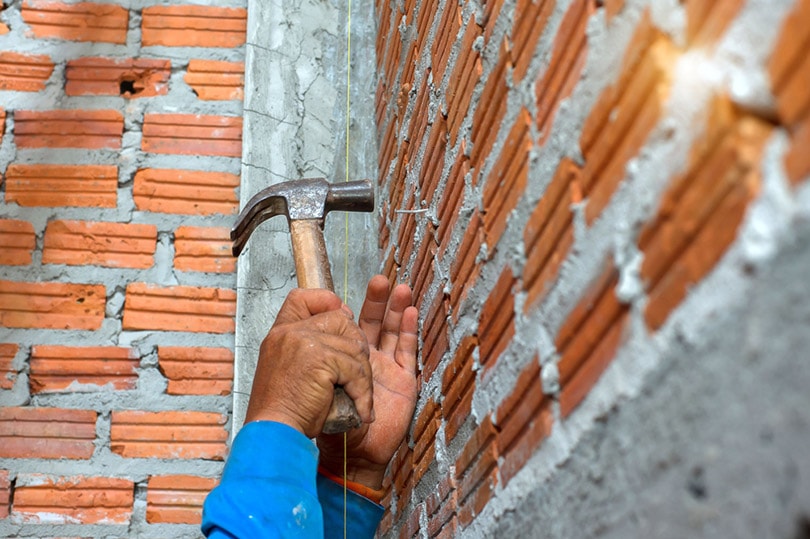
Brick is a durable building material that is commonly used in the construction of walls. Brick is beneficial because it will potentially stand for hundreds of years, but this same toughness makes it difficult to hammer nails into.
Hammering directly into brick will cause the brick to shatter and break. Either hammer into the mortar between bricks or use an alternative fastening, such as a sleeve anchor, if you have to go directly into masonry. Another option is to drill a hole directly into the brick and then insert the nail into that hole.
Below, we’ve covered basic instructions for all these methods, as well as a list of equipment and materials you will need.
Nailing Into Mortar
It is easier to nail into mortar than into brick, but you will still need to make a guide hole to more easily insert the nail without causing damage. You can even mix some mortar and insert it into the hole, push the nail in while the mortar is still wet, and allow the mortar to dry.
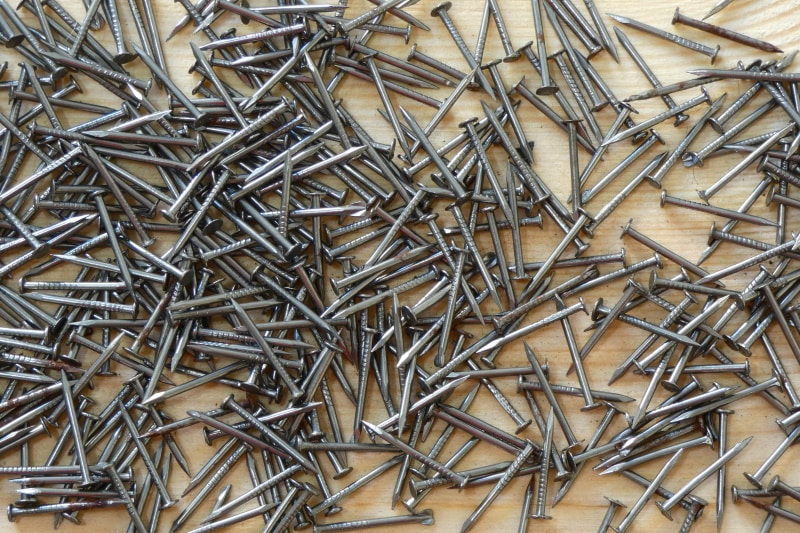
What You Need
- Hammer
- Masonry drill bit
- Masonry nails
- Power drill
Choose a drill bit that is slightly smaller than the diameter of the nails you are using or that exactly matches it. The bit should not be any bigger than the nail itself.
1. Mark the Location
Use a pencil and mark the location you want to hang the nails. Ensure that you mark in the mortar between the bricks and not directly in the bricks themselves.
2. Drill Holes
Using a masonry bit exactly the same size or slightly smaller than the size of the nail, drill holes in the marked positions.
3. Place the Nails
Push the nails in the holes and lightly tap them with a hammer to ensure that they are firmly where you want them. Pull directly downwards on the nails to ensure that they are firm and don’t wiggle.
Hanging a Nail in Brick
There may be occasions when you need to hang a nail directly onto brick. The process is basically the same as hanging a nail in mortar, but it will require more effort to get the drill through the brick itself, and one wrong move could cause the brick to shatter. Using a lubricant in the hole and on the nail can help ensure better results.
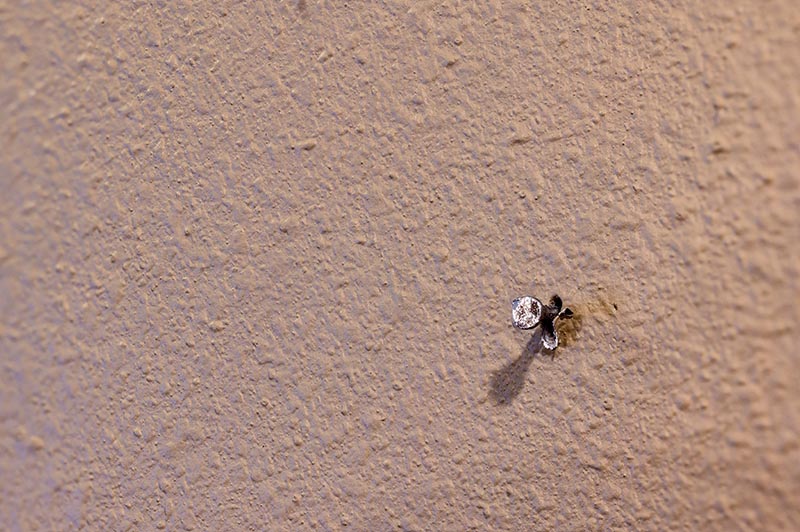
What You Need
- Hammer
- Masonry drill bit
- Masonry nails
- Power drill
The nails you use should be buried at least 1¼ inches into the brick to ensure they don’t pull out, and the bit needs to be the same or slightly smaller in size than the diameter of the nail.
1. Mark Your Holes
Use a pencil to mark the areas you want to hang nails. Marking holes helps ensure that you don’t drill the wrong spot and create unnecessary holes in your brickwork.
2. Drill
Use the right size drill bit, ensure you wear goggles to prevent shards of concrete or brick from getting in your eyes, and drill through the marks you made.
3. Lubricate
Use a lubricant and spray in the hole and on the nail. This will reduce friction and help eliminate the possibility of damaging the brick.
4. Place the Nails
Gently tap the nails into the holes you’ve created. Don’t hit the nails too hard, or you risk damaging the bricks.
Using Sleeve Anchors
Rather than trying to install nails directly into brick, you can use sleeve anchors. The sleeve expands, ensuring a tighter and more secure fit, and anchors can be placed directly in brickwork or in the mortar between bricks according to your placement requirements.
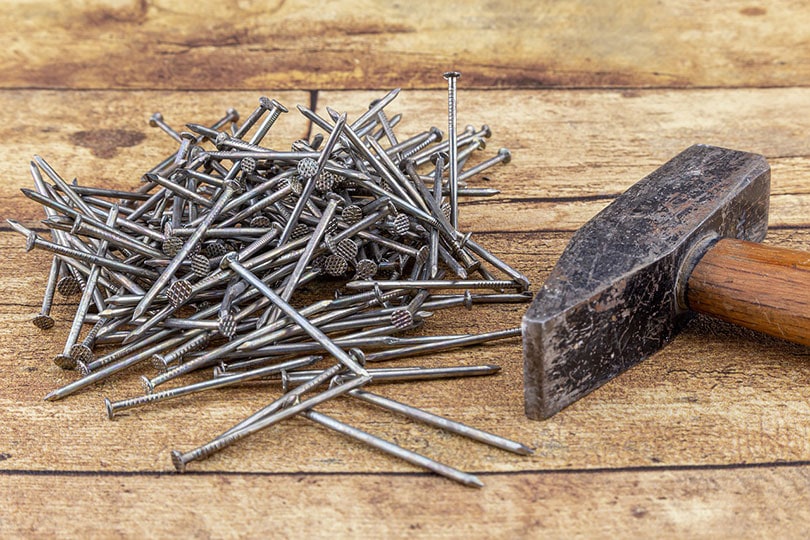
What You Need
- Sleeve Anchors
- Power drill
- Masonry drill bit
- Compressed air
- Hammer
The masonry drill bit needs to be the same size as the diameter of the sleeve anchors. The sleeves will expand when used, which will secure them firmly in the brickwork. The compressed air enables you to blow the dust out of the hole when partway through the process, but your drill may have a feature that does this for you.
1. Mark the Holes
Mark the hole locations using a pencil and ensure that you get the right locations.
2. Drill the Holes
Use a drill bit that is the same diameter as the sleeve anchor and use a masonry bit. Make sure you keep the drill steady and at a 90° angle to the anchor. Most anchors require that you drill to an exact depth.
3. Clean the Holes
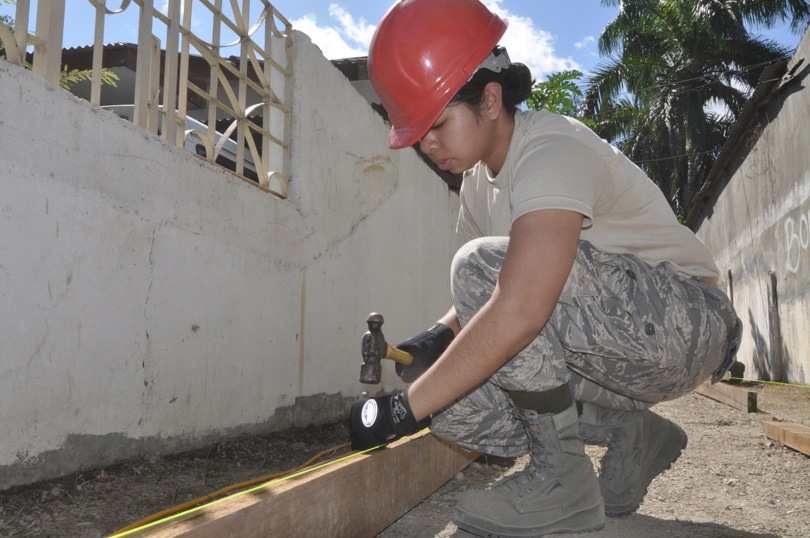
Use compressed air to blow any dust and debris out of the holes once you’ve finished drilling.
4. Insert the Anchors
Push the anchors into the hole. Use a hammer and gently tap them into position, if necessary, to ensure a good fit.
5. Tighten the Anchors
Use a wrench to tighten the nut head or a screwdriver to tighten the screw head. Tightening the head will expand the anchor, ensuring a secure fastening.
Can You Screw Into Brick?
Screwing into brick can also be tricky, and it isn’t possible to screw directly into the masonry. You will need to make a hole and add some material that is secure and firm and that you can screw directly into. The most common way to do this is to use wall plugs.
Plastic plugs sit in the hole and expand as a screw is screwed into position. They give a firm hold that is suitable for hanging shelves and other items. Other specialty plugs and fastenings are also available for specific requirements.
Conclusion
It is not possible to directly hammer nails into a brick wall using a hammer. It will cause the brick to splinter and potentially shatter. However, it is possible to first drill a hole and then gently tap a nail into place.
Alternatively, you can use a fastening like a sleeve anchor that will give extra stability and ensure that the nail remains in place. If possible, according to your fixing requirements and the layout of the wall, it may be possible to hang nails in the mortar between bricks rather than working directly on the bricks themselves.
Featured Image Credit: Wichai Prasomsri1, Shutterstock
Contents



